
- VisitSupport Happy HollowDONATE TODAYExploreSupport Happy HollowDONATE TODAYLearnSupport Happy HollowDONATE TODAYSupport
-
Today's Hours: 10:00 am to 4:00 pm
Happy Hollow Blog
From Happy Hollow to Namibia
February 15, 2024

Noelle Huget has followed her passion for conservation since she was 12 years old. From attending Happy Hollow Park & Zoo lectures and camps to recently working as an intern for Happy Hollow Foundation – what inspired her then, became a lifelong goal. The following story is a first-person account of her dream-come-true adventure to Namibia where she interned at Cheetah Conservation Fund (CCF), a past recipient of Quarters for Conservation funds from Happy Hollow:
My Travel Journal, by Noelle Huget
After volunteering as a ZooTeen at Happy Hollow Park & Zoo and finishing four years of high school, I moved to Boston where I earned a bachelor’s degree in Biology and Math at Northeastern University. I absolutely loved my time in university and even had the opportunity to do animal behavior research in a marine lab, but my sights remained set on conservation. In my final semester I applied to intern at Cheetah Conservation Fund (CCF) and was accepted!
But before I could go to CCF, I had three months at home with no plan. Fortunately, I had the opportunity to return to Happy Hollow, this time as an intern at the Happy Hollow Foundation. There, I learned about a new side of conservation that I had never known before: grant writing and fundraising. I learned how important donors are to keeping an organization like Happy Hollow or CCF running, and gained insight into how projects like Senior Safari and the Monarch Meadow are planned and financed. My time interning at the Happy Hollow Foundation helped me understand how funding worked for CCF and for the projects in the genetics lab, specifically.
After my three months with the Happy Hollow Foundation, it was time for me to make my way to Namibia. So, I packed my bags–with the help of my mom and my cat–and braced myself for an adventure.
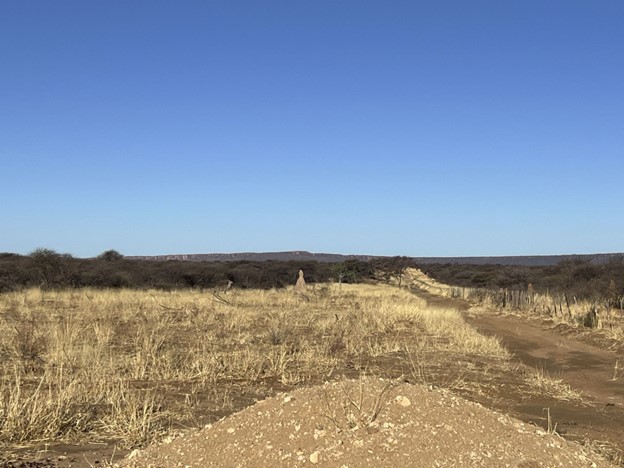
View of the bush, a two-minute walk from my bedroom. If you look closely, you can see an eland to the left of the termite mound. (I also once saw a troop of baboons on this trail). When I arrived at CCF, I was immediately taken aback by the nature surrounding the center. Due to its remote location, CCF is surrounded by bush in all directions.
While interning at CCF, I had the opportunity to help all departments. However, due to my biology and math background, I was brought into the genetics lab where I worked on extracting DNA from cheetah scat samples. These samples were collected from various locations around CCF and needed to be matched to local cheetahs. I did this by comparing the genotype (or the genetic information) from blood samples to the genotype of the DNA extracted from the scat samples.

Extracting DNA from scat with the help of my lab partner, Valencia. When I wasn’t in the lab, I was on a general rotation where I assisted the other departments. I was able to use my knowledge of animal husbandry when helping the cheetah keepers feed and administer oral medications to the cheetahs. I was also able to learn more about education through helping with feeding talks and assisting members of the tourism department with guest tours.
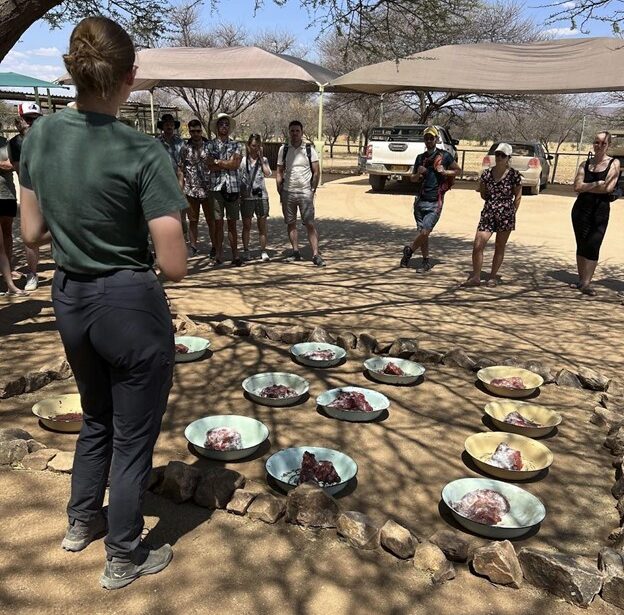
The center feeding talk, where we would educate visitors about our cheetahs as well as CCF’s local conservation efforts. I also had the opportunity to help with the livestock guarding dog program. CCF breeds Anatolian shepherds to go out with local herds to protect the livestock from local predators, such as cheetahs, leopards, and baboons. Anatolian shepherds bond to their herds and will protect them with their lives, although most predators will run at the sight of such an intimidating dog. The guarding dogs therefore reduce human wildlife conflict by minimizing a farmer’s losses to predators. My role with the dogs was to care for the on-site breeding and working dogs as well as assist with puppy care!
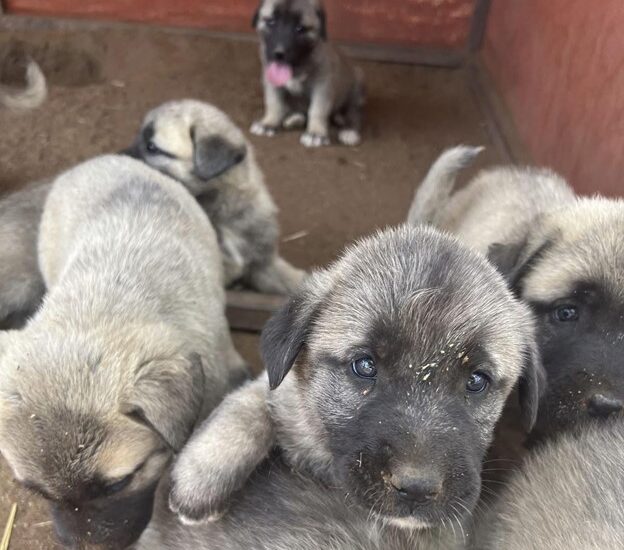
One of my favorite activities while at CCF was assisting the ecology department with game counts. Each month, the ecology department drove into CCF’s game reserve to count the local wildlife for a long term population study and monitor the health of their local populations. I helped by recording the animals we saw as well as their distance from the main road.
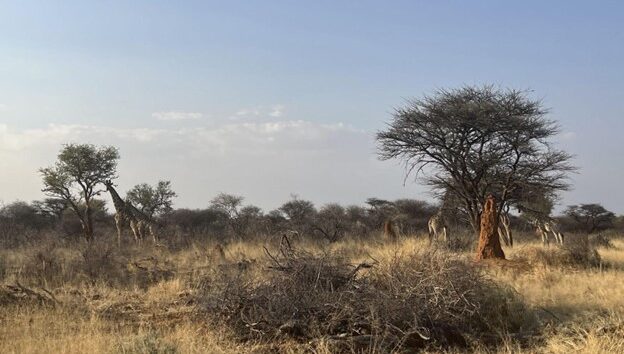
Overall, my time at CCF taught me about the importance of interdisciplinary approaches to conservation. While each aspect of conservation is important, from education to reduction of human-wildlife conflict to population monitoring via genetics, they become more effective when used in tandem with other elements. Throughout my time, I had the pleasure of learning about each group separately and seeing them interact with each other. Now that I am back in the US, I am excited to take my next step in my conservation career by obtaining a masters and becoming more involved in ecology research.
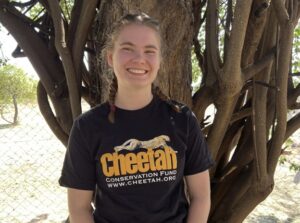
Noelle Huget is currently a research assistant at Cal Tech and is applying to graduate school.